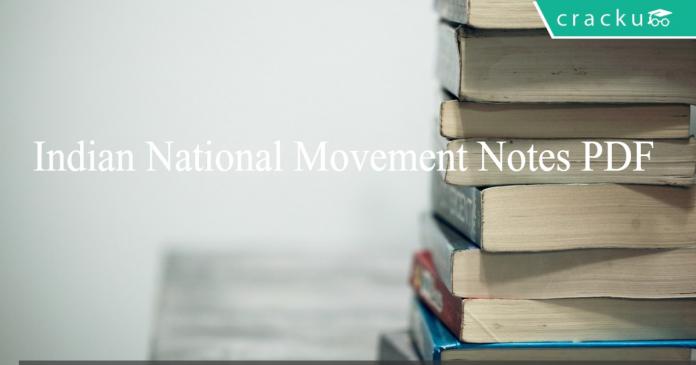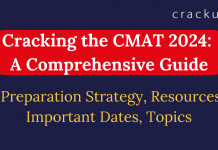Download the Indian National Movement Notes PDF. This PDF covers the Swadeshi & Boycott Movement, Home Rule League, Khilafat Non-cooperation Movement, Civil-Disobedience Movement, Quit India Movement very useful for UPSC, BANKING, SSC & all competitive exams.
Download Indian National Movement Notes PDF
All Banking/SSC/RRB Content @ Rs. 199
Download Daily & Monthly Current affairs quiz PDF
Download all General Knowledge Questions & Answers PDF
Download Current Affairs Questions & Answers PDF
Download General Science Notes And Q&A PDF
1.Swadeshi & Boycott movement:
This movement was started as a reaction to the partition of Bengal which was came to be known in 1903, formally announced in July 1905 and came into force from October 1905.The motive of the British is to weaken the Nationalists activity by the partition of Bengal.
The movement has taken place in 2 phases:
a)Anti-Partition Movement:
This movement took place from 1903 to 1905 led by the moderates like Surendranath Benerjee, Dada Bhai Naoroji, K.K.Mitra by using the methods like public meetings, petitions, memoranda etc.
b)Swadeshi & Boycott Movement:
This movement took place from 1905 to 1908 led by the Extremists such as Tilak, Bipin chandra Pal, Aurobindo Gosh, Lala Lajapati Rai.Boycott of foreign cloth, Forming Samitis, use of traditional festivals for the propagation of the movement, swadeshi or national education,swadeshi enterprises promotion, Propagation through paintings, poetry, songs are the methods used in the movement.
2.Home Rule League Movement:
Home Rule Movement in India was started on the same lines of the movement in Ireland to convey the concept of the self-government to the common man.
a)Bala Gangadhar Tilak’s League:
This movement started in April 1916 in Maharashtra, Karnataka, Central Provinces & Berar.
b)Annie Beasant League:
This movement started in September 1916 in the rest of India led by Annie Beasant.
The methods used in the league movement are newspapers, pamphlets, posters & public meetings.
3.Khilafat Non-Cooperation Movement:
Reasons for the launch of the Khilafat Non-Cooperation Movement are:
1)Treatment meted out to the Turkey & the Khalifa, Spiritual leader of the Muslims by the British after the World War I angered Musilms in India & the world.
2)Alarming economic situation of the country, Jallianwala Bagh Massacre, Rowlatt Act, Hunter Commission Report on Jallianwala Bagh Massacre provided the ground for Political action in the country.
The Khilafat Committee has formally launched the Non-Cooperation Movement in August 1920. In December 1920, at the Nagpur Session Of the Indian National Congress, Congress has adopted the Non-Cooperation Movement.Boycott of government schools, colleges, law courts, municipality & government service, foreign cloth, liquor, setting up of national schools, colleges, panchayats and using khadi are the methods used in the Movement.
On February 5, 1922 Chauri Chaura Police station was burnt with twentytwo policemen burnt inside by an agitated mob. This incident led to the Movement call-off by the Mahatma Gandhi.
4.Civil Disobedience Movement:
Civil Disobedience Movement took place in two phases.
a)First Civil Disobedience Movement:
Salt was the central formula of the Civil-Disobedience Movement.The Civil-Disobedience Movement started with the launch of Mahatma Gandhi’s Dandi March on March 12, 1930. Dandi March ended on April 6 with Mahatma Gandhi breaking the salt law at Dandi. After Dandi March, C.Raja Gopalachari led the march from Tiruchurapally to Vedaranniyam in TamilNadu while K.Kelappan led a march from Calicut to Poyannur in Kerala.
Salt satyagraha, anti-chowkidar tax campaign, no-tax movement, No-rent Movement were the main methods of spreading the movement.Mass participation of the women,students, tribals, workers, peasants, merchants, some section of muslims were witnessed in the movement.
First Civil Disobedience Movement was withdrawn in March 1931 with the Gandhi-Irwin Pact. And Congress also agreed to attend the second Round Table Conference.
b)Second Civil Disobedience Movement:
Failure of the second Round Table Conference talks led to the launch of the Second Civil Disobedience Movement & its duration is from December 1931 to April 1934. Protests in the form of picketing of shops selling liquor and foreign cloth, illegal gatherings,Salt satyagraha, Non-payment of taxes, forest law violations were made. British Government was prepared beforehand for the Movement. Therefore the British Government came down heavily on the Movement with Martial laws imposition, banning of Congress organisations, arresting the leaders, activists,occupying the Gandhi Ashrams.
5.Quit India Movement:
The reasons for the launch of Quit India Movement were:
1.Failure of Cripps proposal led to a wakeup call for the Indians who have realised the British lack of will to concede to the demands of India.
2.Indians discontent of the worldwar hardships.
The Movement started on August 8, 1942. Prior to the launch of the movement all prominent leaders including Mahatma Gandhi were arrested and the movement was left leaderless.Common men took the Movement in their hands.Symbols of Authority were attacked, Parallel governments in Ballia, Tumluk, Satara were launched, Public went on rampage.The movement witnessed the participation of workers, Peasants, women, youth, Communists, Government officials. The Quit India Movement led eventually to the declaration of Independence for India by the British Government.





